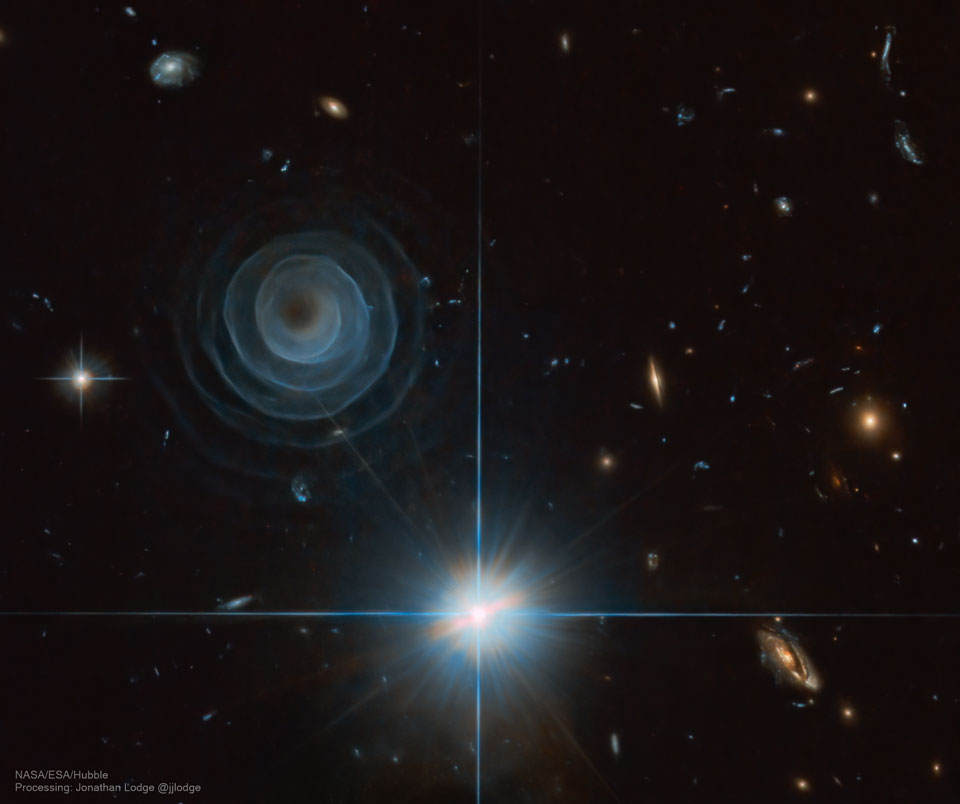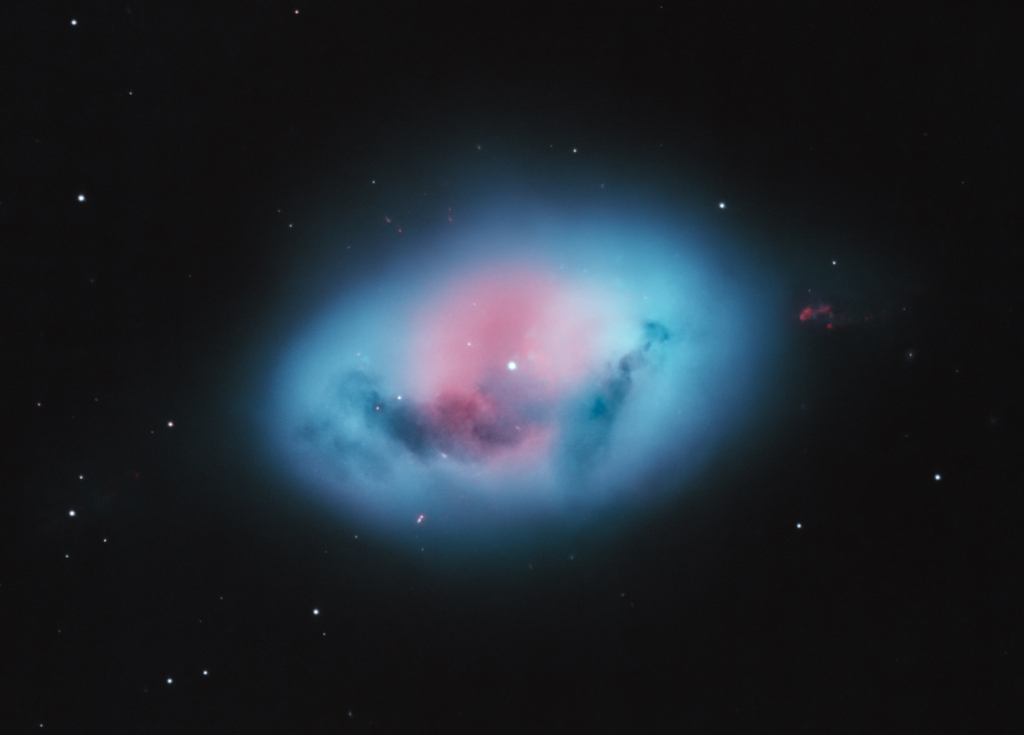2021年11月29日
The Extraordinary Spiral in LL Pegasi
Image Credit: NASA, ESA, Hubble, HLA; Processing & Copyright: Jonathan Lodge
Explanation: What created the strange spiral structure on the upper left? No one is sure, although it is likely related to a star in a binary star system entering the planetary nebula phase, when its outer atmosphere is ejected. The huge spiral spans about a third of a light year across and, winding four or five complete turns, has a regularity that is without precedent. Given the expansion rate of the spiral gas, a new layer must appear about every 800 years, a close match to the time it takes for the two stars to orbit each other. The star system that created it is most commonly known as LL Pegasi, but also AFGL 3068 and IRAS 23166+1655. The featured image was taken in near-infrared light by the Hubble Space Telescope. Why the spiral glows is itself a mystery, with a leading hypothesis being illumination by light reflected from nearby stars.
Tomorrow’s picture: planet with moons
飞马LL星的不寻常螺旋结构
影像提供: NASA, ESA, Hubble, HLA; 影像处理与版权: Jonathan Lodge
说明: 影像左上角的怪异螺旋结构是怎么产生的?没人能说个准,不过它可能是一颗在双星系统里的恒星,抛出外层的大气进到行星状星云阶段之故。这个横跨了3分之1光年、并且缠绕4到5个完整回圈的庞大螺旋 ,其规律性前所未见。以这团螺旋气体的扩散速率来推算,大约每800年会产生一个新层,与这与两颗恒星互绕的周期相当接近。产生这个结构的恒星系统常见的名称为飞马LL星,此外,亦拥有AFGL 3068和IRAS 23166+1655的编录号。这张主题影像,是由哈伯太空望远镜摄于近红外光波段。这个螺旋结构为何会发光也颇为困惑,最可信的假说指出那是因为它反射了附近恒星的星光。
明日的图片: planet with moons



